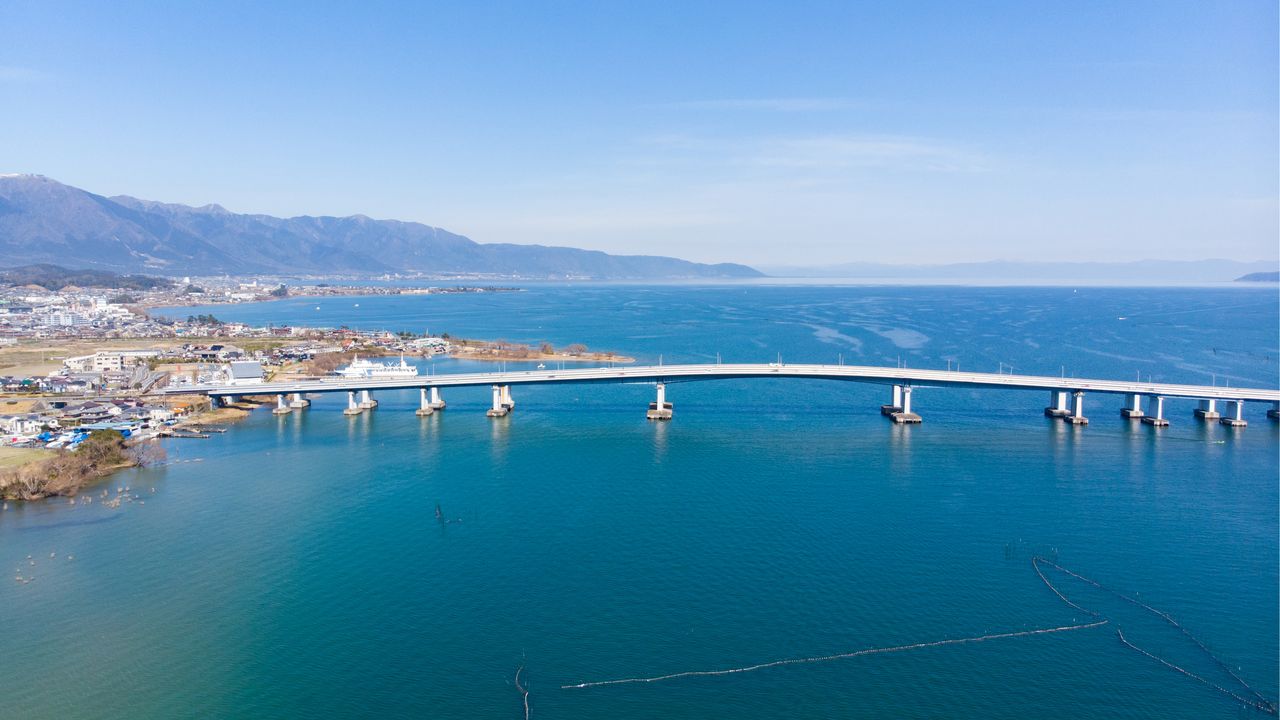
Lake Biwa: Japan’s Largest Freshwater Body Supplies Water to More than 10% of the Country’s Population
Environment Society- English
- 日本語
- 简体字
- 繁體字
- Français
- Español
- العربية
- Русский
Lake Biwa, covering an area of 670 square kilometers, is famed for being Japan’s largest lake, and its proximity to the former capital of Kyoto means it has featured in art and literature since ancient times. Contained entirely within Shiga Prefecture, it is three times the size of Lake Kasumigaura, which with a surface area of 220 square kilometers is the second largest in the country. Lake Biwa has a shoreline length of around 235 kilometers, meaning it would take more than 10 hours to cycle around it, traveling at an average of 20 kilometers an hour. On foot, moving at 4 kilometers an hour would take over 50 hours, or more than two days nonstop.
Lake Biwa Profile
| Area | 669.3 km2 |
| Shoreline Length | 235.2 km |
| North-South Length | 63.49 km |
| East-West Width | Maximum 22.8 km / minimum 1.3 km |
| Depth | Maximum 103.6 m / average 41.2 m |
| Volume | 27.5 billion m3 |

Sunshine Beach at Ōtsu Lakeside Nagisa Park. (© Pixta)

The “floating” torii gate at Shirahige Shrine. (© Pixta)

Ukimidō “floating temple hall” at the Mangetsuji temple. (© Pixta)
Abundant water makes for beautiful scenery, and Lake Biwa also serves as a reservoir for the Kansai region. Most of the water used in the city of Kyoto is drawn from this lake. Meanwhile, the whole of Osaka Prefecture and the city of Kobe use water from Yodo River, the source for which is Lake Biwa. This works out to approximately 15 million people, more than 10% of Japan’s population, whose water supply is provided by the lake.
Number of People Supplied with Water from Lake Biwa by Prefecture
| (million people) | |
|---|---|
| Shiga | 1.21 |
| Kyoto | 1.80 |
| Osaka | 8.81 |
| Hyōgo | 2.97 |
| Total | 14.79 |
Lake Biwa is one of the most ancient lakes in the world. Around 4 million years ago, a shallow lake formed near what is now the city of Iga, Mie Prefecture. It slowly and continuously changed shape over a long period of time, affected by fault movements that caused the ground to sink and sediment to fill the depressions, shifting until it attained its present form, what is thought to be about 400,000 years ago.
During the lake’s long history, some of the aquatic organisms living there have evolved in unique ways. It has been confirmed that the waters provide a habitat for more than 1,700 species of aquatic plants and animals, including over 60 species considering endemic to the lake such as the Biwako ōnamazu (giant Lake Biwa catfish) and Biwa masu (Biwa trout).

Lake Biwa Great Fireworks Festival is a traditional summer event, held annually around August 8. This year, 2023, will be the first time in four years it has been held. (© Pixta)
(Translated from Japanese. Banner photo © Pixta.)


